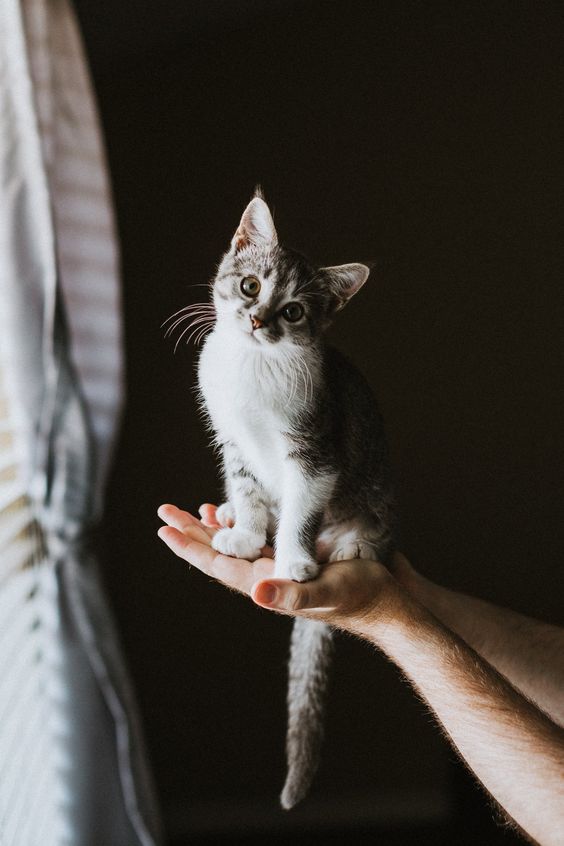
First Cat: Tips and Expectations
As much as we all love Garfield, our beloved childhood cat plush, and the neighbourhood tom cat - adopting a feline friend can be a daunting milestone.
Whether this is your first experience adopting a cat or your first time in a while, here are a few helpful tips on bringing your new fur baby home!
…
THINGS TO CONSIDER
Resources - Your cat’s health and well-being needs to be monitored and maintained regularly. As a new parent, we recommend you do some research on the cost of owning a pet. With a new cat comes annual to monthly vet visits, deworming, heart-worm / flea prevention, amongst other costs. Be prepared to spend some money on food, toys, bedding, litter, and other necessities your cat may need down the road.
Quality Cat Time - Think about if you’re away from home a lot! Many new cats find the move from shelter to their new home environment quite stressful. They often times need a bit of time to find comfort in their new surroundings. Not to mention to create a bond with you and your family during their first week at home.
Pro tip: Remember to have regular play and petting sessions (if cat allows it) so your cat understands you are their new companion.
The Nest - Do you rent or own? Be familiar with your buildings pet policies or your landlords policies on having a furry friend at home. Not every building is pet friendly.
Other Fur Babies - If you’re an animal lover and have other pets at home, consider how your pets behave socially towards other people, children, and animals. If you have a pet at home that you’ve had for a very long time, they might have issues adjusting to a new furry family member.
Pro Tip: There are many resources online on how to properly introduce your new cat to any existing pets you might have. Try: pethelful.com, jacksongalaxy.com, and ctrs.com.
Young Children - Some cats have never interacted with small children or might be uncomfortable playing with high energy kiddies! Make sure to supervisor all interactions and show your children how to interact properly with your new cat.
Pro Tip: Some rescue cats might not be compatible with young children or babies. Don’t be afraid to ask the organization you’re adopting from if the cat would be happy in a home with children.
A Cat is Commitment - Kitty cats can live 10 - 20 years. If you’re serious about adopting, make sure that you’re ready for the commitment. Cats have feelings, memories, and emotions just like you! Make it a lasting happy memory for both parties.
Pro Tip: Only return any adopted cats if absolutely necessary. We recommend you surrender the cat back to it’s original rescue or to any no-kill shelters in your area.
Special Needs Cats - If commitment is really your thing, consider adopting or fostering special needs cats. There are many affectionate cats that get overlooked because they might be a little more dependant or come with some extra costs. Adopting special needs cats can be extremely rewarding considering they are often the least wanted. Do some research and see if these cats could be the right fit for you!
THE GROCERY LIST (a.k.a supplies)
- Litter Box
- Litter
- Food Bowls
- Food
- Cat Carrier
- Toys
- Scratching Post
- Shampoo
- Collar
- Brush
TRAINING
Scratching Post - Once you purchase your scratching post, invest in a little catnip to rub on it! Your cat will become much more drawn to their designated scratching area. The catnip will save your furniture and provide a fun experience for your new cat.
Litter Training - When it comes to introducing your cat to its litter box, there’s a few simple steps you can take to help them succeed in using their toilet properly. If you’re lucky, your cat will already know how and where to use their litter box. Most shelter cats are already litter trained and will know what their bathrooms look like! However, if your cat is still spraying or peeing discreetly in the corners of your home, try these tips:
1) Leave the cat in your bathroom or a spacious room in your house with the cover to their litter box open. We suggest you leave them in the room with their blankets, toys, food, and litter for 1-5 days so that they are confident in using their designated litter box!
2) Buy a litter box or litter similar to the brand the rescue or shelter was using. The cat will recognize these products much faster and feel more comfortable using them.
3) If you have more than one cat, it’s recommended to have one litter box per cat. The biggest reason is cleanliness. Cats use the toilet quite frequently and the walls to your litter box might start to get a little dirty and smelly! Having a box per cat will help with smell and allowing each cat to have their own private space.
The Vet - Vet visits are very important in maintaining your cat’s health. Scheduling in a visit within the first month of adopting your cat will show you where your cat is health wise and what improvements or good habits you can continue. Your vet has many resources and tips on feeding, training, and animal welfare. It’s always good to check-in with your vet twice a year and get regular check-ups.
Be Patient - A big part of being a first time cat parent is patience! It might take some time for your cat to adjust and to form a bond with you. Remember to respect their space and body language. We all need a little time to adapt to a new environments sometimes.
…
We hope that these tips were of help to some new adoptive parents out there! Please come by to Catoro Cafe (666 East Broadway, Vancouver, BC) if you’re interested in meeting your new best friend or just in need of a bit of feline love.
Sources: jacksongalaxy.com
- Léah Michaud
